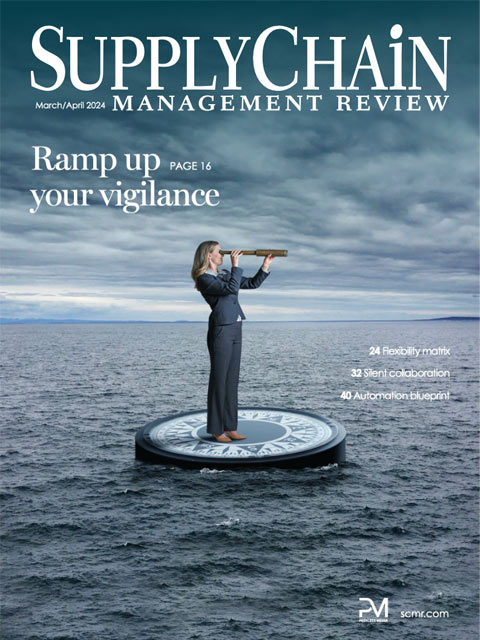Sorry, but your login has failed. Please recheck your login information and resubmit. If your subscription has expired, renew here.
March-April 2024
Part of any supply chain manager’s job is risk mitigation. Thanks to COVID-19 and the ensuing, and constant, disruptions that have followed, more companies are now focused on reducing their exposure to supply chain chaos. We’ve heard a lot about diversification in recent years—having multiple suppliers in multiple locations. But risk mitigation goes far beyond diversification, and the recent case of Boeing should serve as a cautionary tale not to avoid those other risks. Browse this issue archive.Need Help? Contact customer service 847-559-7581 More options
The first CPFR pilot started in 1996 when Walmart collaborated with Warner-Lambert, focusing on the Listerine category of products. In conducting the pilot, Walmart and Warner-Lambert independently calculated the demand they expected for a period of six months into the future. They exchanged forecast numbers over the Internet, using special software. If the numbers were different, they used the link to exchange more data and eventually converged on a single forecast.
The pilot proved to be very successful, helping to confirm the potential promise of improved collaboration. Listerine sales went up, in-stocks were much higher, fill rates were at acceptable levels, and ecosystem inventories were reduced.
While this early pilot helped cement the benefits of collaboration, over the next several years and decades, CPFR failed to scale and realize its potential despite several success stories. This was largely because of two issues that plagued the approach.
First, in the model, both the retailer and the supplier were deriving an independent forecast of essentially supplier orders. That often resulted in a large discrepancy between each entity’s forecast. Then, as a result, considerable time and effort were required from both entities to reconcile the differences, reforecast, collaborate again, and eventually come to a consensus on a shared forecast of supplier orders.

This complete article is available to subscribers only.
Log in now for full access or start your PLUS+ subscription for instant access.
SC
MR
Sorry, but your login has failed. Please recheck your login information and resubmit. If your subscription has expired, renew here.
March-April 2024
Part of any supply chain manager’s job is risk mitigation. Thanks to COVID-19 and the ensuing, and constant, disruptions that have followed, more companies are now focused on reducing their exposure to supply chain… Browse this issue archive. Access your online digital edition. Download a PDF file of the March-April 2024 issue.The first CPFR pilot started in 1996 when Walmart collaborated with Warner-Lambert, focusing on the Listerine category of products. In conducting the pilot, Walmart and Warner-Lambert independently calculated the demand they expected for a period of six months into the future. They exchanged forecast numbers over the Internet, using special software. If the numbers were different, they used the link to exchange more data and eventually converged on a single forecast.
The pilot proved to be very successful, helping to confirm the potential promise of improved collaboration. Listerine sales went up, in-stocks were much higher, fill rates were at acceptable levels, and ecosystem inventories were reduced.
While this early pilot helped cement the benefits of collaboration, over the next several years and decades, CPFR failed to scale and realize its potential despite several success stories. This was largely because of two issues that plagued the approach.
First, in the model, both the retailer and the supplier were deriving an independent forecast of essentially supplier orders. That often resulted in a large discrepancy between each entity’s forecast. Then, as a result, considerable time and effort were required from both entities to reconcile the differences, reforecast, collaborate again, and eventually come to a consensus on a shared forecast of supplier orders.
SC
MR


Latest Supply Chain News
Latest Podcast

 Explore
Explore
Business Management News
- U.S.-bound containerized import shipments are up in June and first half of 2024
- Expand supply chain metrics to cover the complete customer experience
- When disaster strikes, the supply chain becomes the key to life
- Leadership development for supply chain leaders
- A smarter approach to sustainability is vital for healthy, resilient supply chains
- When the scales tilt: Making vaccine access work for all
- More Business Management
Latest Business Management Resources

Subscribe

Supply Chain Management Review delivers the best industry content.

Editors’ Picks





